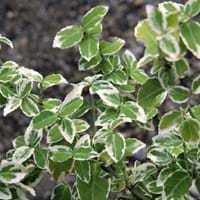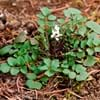Life Span
Annual
Perennial
Type
Herbs
Broadleaf Evergreen
Origin
Europe, Asia
China
Types
Admiral Pepper,Bell Pepper,Mohawk Pepper,Yolo Wonder Pepper
Euonymus fortunei fortunei, Euonymus fortunei radicans, Euonymus fortunei vegetus
Habitat
Cropland, Oil fields, Waste areas
Hedge, Shady Edge, Woodland Garden Dappled Shade
USDA Hardiness Zone
4-9
5-9
AHS Heat Zone
Not Available
9-2
Sunset Zone
Not Available
2b, 3a, 3b, 4, 5, 6, 7, 8, 9, 10, 11, 12, 13, 14, 15, 16, 17
Habit
Clump-Forming
Spreading
Flower Color
White
Yellow green
Flower Color Modifier
Not Available
Not Available
Fruit Color
Green, Tan
Orange, Pink
Leaf Color in Spring
Green
Green, Dark Green
Leaf Color in Summer
Not Available
Green, Dark Green
Leaf Color in Fall
Green
Green, Dark Green
Leaf Color in Winter
Green
Green, Dark Green
Leaf Shape
Egg-shaped
Elliptic and Ovate
Plant Season
Not Available
Spring, Summer, Fall, Winter
Sunlight
Full Sun, Partial Sun
Full Sun, Partial Sun, Partial shade, Full Shade
Growth Rate
Very Fast
Fast
Type of Soil
Clay, Loam, Sand
Clay, Loam, Sand
The pH of Soil
Acidic, Neutral, Alkaline
Acidic, Neutral, Alkaline
Soil Drainage
Well drained
Average
Bloom Time
Early Spring, Spring, Late Spring, Late Fall, Early Winter, Winter, Late Winter
Late Spring, Early Summer
Tolerances
Pollution
Pollution, Salt, Soil Compaction
Where to Plant?
Ground, Pot
Ground, Pot
How to Plant?
Stem Planting, Transplanting
Cuttings, Seedlings, Semi-ripe cuttings
Plant Maintenance
Medium
Low
Watering Requirements
Prefer drip-irrigation instead of Over-head watering, Water Deeply
Medium
In Summer
Lots of watering
Average Water
In Spring
Moderate
Moderate
In Winter
Average Water
Average Water
Soil pH
Acidic, Neutral, Alkaline
Acidic, Neutral, Alkaline
Soil Type
Clay, Loam, Sand
Clay, Loam, Sand
Soil Drainage Capacity
Well drained
Average
Sun Exposure
Full Sun, Partial Sun
Full Sun, Partial Sun, Partial shade, Full Shade
Pruning
Prune ocassionally, Prune to control growth
Remove damaged leaves, Remove dead branches, Remove dead leaves
Fertilizers
All-Purpose Liquid Fertilizer
since leafy plants, use higher nitrogen content fertilizer
Pests and Diseases
Not Available
Anthracnose, Aphids, Crown gall, Leaf spot, Soft scales
Plant Tolerance
Drought
Pollution, Salt, Soil Compaction
Flowers
Insignificant
Insignificant
Flower Petal Number
Single
Single
Foliage Texture
Fine
Medium
Foliage Sheen
Not Available
Glossy
Attracts
Not Available
Butterflies, Not Available
Allergy
Not Available
Not Available
Aesthetic Uses
Not Used For Aesthetic Purpose
Cottage Garden, Ground Cover
Beauty Benefits
Not Available
Not Available
Environmental Uses
Air purification
Erosion control
Medicinal Uses
Not Available
anti-cancer, Gynaecological
Part of Plant Used
Not Available
Leaves
Other Uses
Unknown
Used as Ornamental plant
Used As Indoor Plant
No
No
Used As Outdoor Plant
Yes
Yes
Garden Design
Not Available
Container, Edging, Foundation, Groundcover, Hedges, Mixed Border, Vine
Botanical Name
CARDAMINE hirsuta
EUONYMUS fortunei
Common Name
Hairy Bittercress
Wintercreeper, Wintercreeper Euonymus
In Hindi
बालों वाली Bittercress
Wintercreeper
In German
Hairy Bittercress
Weißbunte
In French
Bittercress Poilu
wintercreeper
In Spanish
Bittercress Peludo
Wintercreeper
In Greek
τριχωτές Bittercress
Wintercreeper
In Portuguese
Bittercress cabeludo
wintercreeper
In Polish
włochaty Bittercress
wintercreeper
In Latin
pilosus bittercress
wintercreeper
Phylum
Magnoliophyta
Magnoliophyta
Class
Magnoliopsida
Magnoliopsida
Order
Brassicales
Celastrales
Family
Brassicaceae
Celastraceae
Clade
Not Available
Angiosperms, Eudicots, Rosids
Tribe
Not Available
Not Available
Subfamily
Not Available
Celastroideae
Number of Species
Not Available
Season and Care of Hairy Bittercress and Wintercreeper
Season and care of Hairy Bittercress and Wintercreeper is important to know. While considering everything about Hairy Bittercress and Wintercreeper Care, growing season is an essential factor. Hairy Bittercress season is Not Available and Wintercreeper season is Not Available. The type of soil for Hairy Bittercress is Clay, Loam, Sand and for Wintercreeper is Clay, Loam, Sand while the PH of soil for Hairy Bittercress is Acidic, Neutral, Alkaline and for Wintercreeper is Acidic, Neutral, Alkaline.
Hairy Bittercress and Wintercreeper Physical Information
Hairy Bittercress and Wintercreeper physical information is very important for comparison. Hairy Bittercress height is 10.20 cm and width 5.10 cm whereas Wintercreeper height is 110.00 cm and width 655.00 cm. The color specification of Hairy Bittercress and Wintercreeper are as follows:
Hairy Bittercress flower color: White
Hairy Bittercress leaf color: Green
Wintercreeper flower color: Yellow green
- Wintercreeper leaf color: Green and Dark Green
Care of Hairy Bittercress and Wintercreeper
Care of Hairy Bittercress and Wintercreeper include pruning, fertilizers, watering etc. Hairy Bittercress pruning is done Prune ocassionally and Prune to control growth and Wintercreeper pruning is done Remove damaged leaves, Remove dead branches and Remove dead leaves. In summer Hairy Bittercress needs Lots of watering and in winter, it needs Average Water. Whereas, in summer Wintercreeper needs Average Water and in winter, it needs Average Water.





